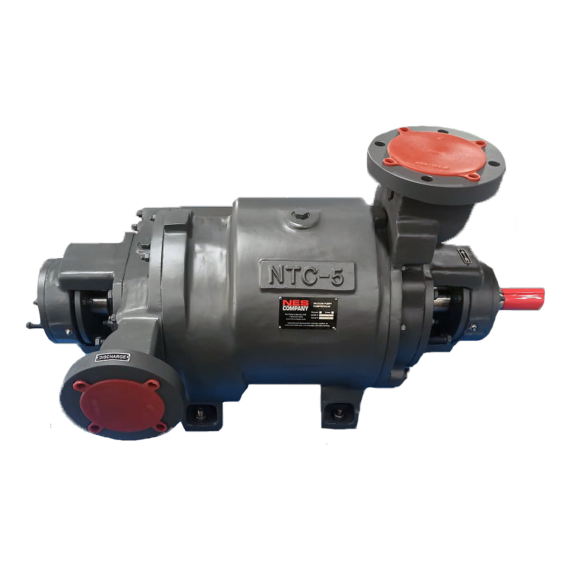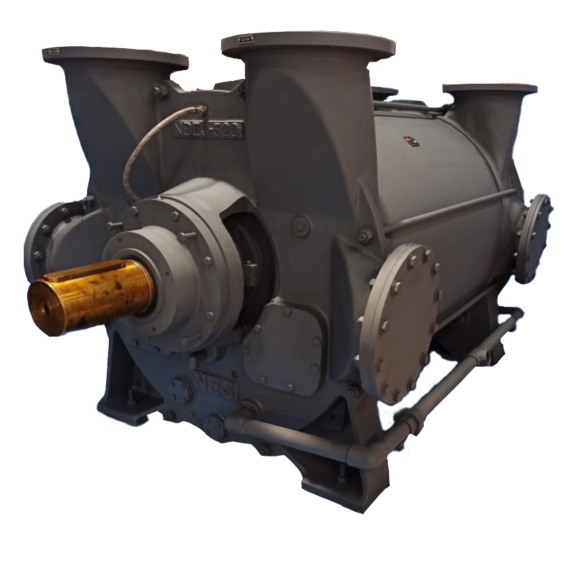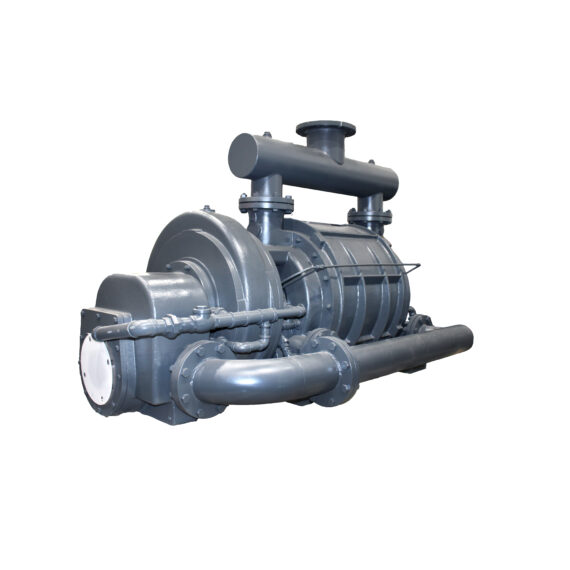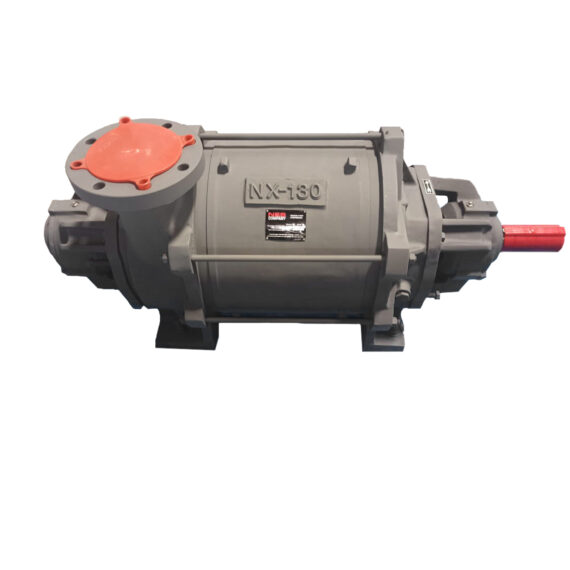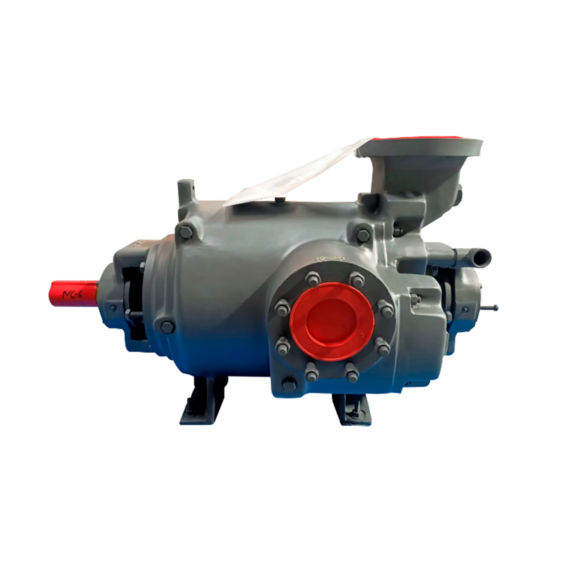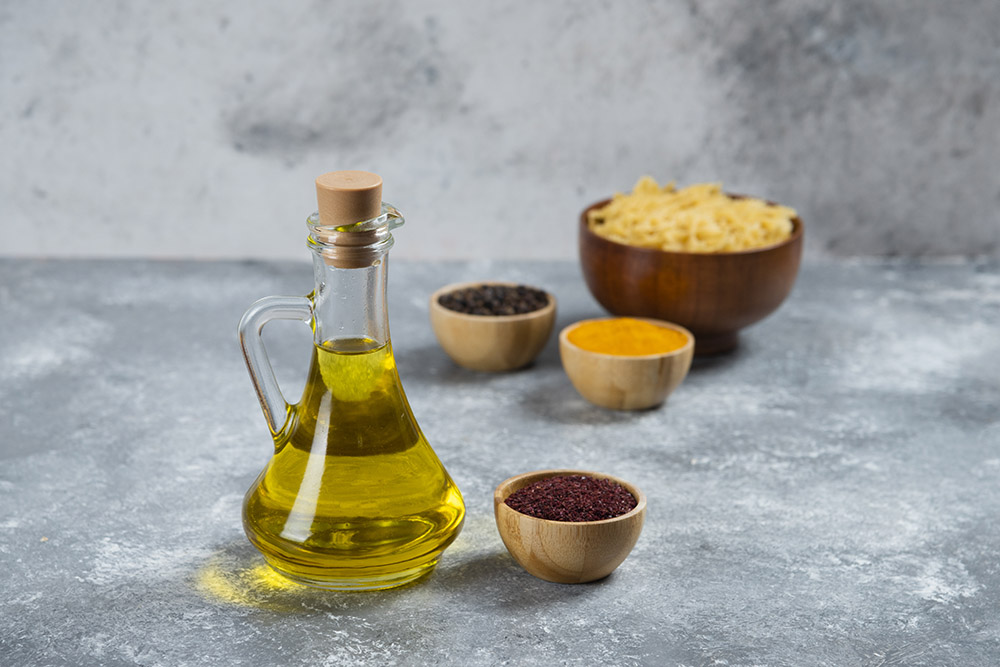
Liquid Ring Vacuum Pumps for Edible Oil Extraction and Stripping
Edible oils extracted from organic matter have been used for cooking, saponifiable products, and manufacturing of various food products such as margarines and shortenings. Crude edible oils are refined through various methods in order to finely control and categorize the physical properties of the oils, from smoke point to odor, into quantified grades of quality.
Extraction of the fats that constitute the oil takes place in two ways: solvent extraction or mechanical extraction. Solvent extraction boasts the higher yield, while mechanical extraction has a low capital cost. Solvent-extraction plants extract 100-9000 metric tons every day using various petrochemical and alcohol compounds, producing specialty and gourmet oils.
Extraction yield using solvents depends on preparation, temperature, mode of operation, and equipment. The choice of solvent also depends on the oil solubility, cost, and safety. The process could take place in batch, continuous, co-current, or countercurrent configurations, but procedure generally leaves less than 1% of oil in the residual organic waste. To recover wasted oil, the resulting organic waste enters a desolventizer-toaster to remove absorbed solvent and moisture content to increase the purity of the recovered oil.
There are other methods similar to this, such as supercritical fluid extraction or aqueous enzymatic extraction, which offer similar benefits to that of solvent extraction with varying advantages, disadvantages, specialties, and hazards.
Mechanical extraction (expeller extraction) involves the use of a press, most often a screw press, to crush the organic matter and extract the oil. The oil is refined and filtered, so it is still considered a high-quality product. The yield is lower, but the recovery of oil from the pressed waste is higher than that of the solvent extraction method.
Depending on the oil, heating the organic matter while pressing may lead to degradation of the oil, causing abnormalities and defects in solubility, diffusivity, color, and shelf life. In these cases, cold-press extraction is utilized. This process entails using a screw press or hydraulic press at lower temperatures. Nutrients, fragrances, and flavors remain intact due to the lack of detrimental high temperatures, so cold-pressed oil is generally considered to be healthier and more desirable for consumption. There are no flammable solvents or high temperatures involved, so the process is very simple and safe. The disadvantages are, of course, the inefficiencies in yield and time.
In hot-press extraction, heat is applied during the process. The organic material is typically roasted or steamed before pressing to release the oil and increase the yield. The heat kills any potential bacteria or microorganisms and typically have a higher smoke point, resulting in easy and safe cooking. With a higher yield, faster operation cycle, and enhanced physical properties, it may seem more beneficial to hot-press all oils. However, hot-pressed oil is oxidized as it is heated, damaging the natural scents and flavors of the oil. The hot-pressed oil is often treated after extraction to make it purer and more stable.
View our Products
After extraction occurs, the oil is treated according to the desire of the manufacturer. Chemical compounds that contribute undesirably to volatility, odor, flavor, stability, diffusivity, and color are controlled. This generally takes four steps: refining, bleaching, deodorization and winterization. Depending on the marketability of the product on the basis of nutrition, processing, and additive manufacturing, plants may end their procedure at extraction and filtration.
Refining is a process that varies greatly with the kind of oil but generally takes place in high, controlled heat to yield a consistent end product. Bleaching is a process that utilizes bleaching clay to remove pigments that may appear due to the presence of carotenes, chlorophylls and heavy metals. The resulting oil is filtered and deodorized. Deodorization is a steam distillation stripping process by which fragrant and otherwise undesirable chemical compounds are forcibly removed via superheated water vapor. The result is RBD edible oil, or Refined/Bleached/Deodorized oil, treated up to national standards and ready for sale and consumption.
Winterization is a separation method through which high-melting point fats are removed. Winterization is typically not applied to general commercially available edible oils. For oils that are to be used for frying, this technique is essential. The oil is thoroughly mixed with a polar solvent like ethanol and placed in a freezer for extended periods of time. The high-melting point lipids, fatty acids, waxes, and other impurities will solidify and separate from the refined oil, which stays in liquid form. After some time, the solution is removed from the freezer and filtered in order to thoroughly remove the solidified impurities. The result is RBDW oil, which is considered purer and does not become turbid in lower temperatures.
Applications of Liquid Ring Vacuum Pumps
Vacuum technology is used in stripping and filtration. Oil contains trace amounts of oxygen which turn out to do tremendous damage in the form of oxidation at high temperatures. This often renders oil completely unfit for consumption. Lowering the boiling point through the manipulation of the system’s ambient pressure ensures the safe removal of volatile materials while preserving the desired organic compounds, improving the effects of deacidification, deodorization, and decolorization. Utilizing the principles of vacuum in the filtration process after extraction, refining, bleaching, and winterization accelerates the pace at which such filtration takes place. Especially with fine mesh sieves or other filtration devices, the time that is consumed solely on the thorough filtration of the oil is costly in and of itself. As a result, using vacuum filtration techniques cuts down operation costs and increases purity by accelerating the process of separating liquid and solid elements before some constituents of the solid elements have the chance to thaw or melt and slip through the filter.
Liquid ring vacuum pumps are in widespread use for edible oil extraction and refining in the global market, desired for their ability to remove condensable gasses and process liquid material along with gasses. Oil extraction temperatures can be quite high, which may cause failure in some dry vacuum pumps due to their tight tolerances and the tendency of solid building material to expand as it heats. In addition, the materials used for refining processes from up to downstream are potentially toxic, hazardous, and flammable. This includes caustic soda or acids used for degumming, superheated steam used for stripping, clay particulate used for bleaching, or ethanol used for winterization. The liquid ring creates a consistent and reliable seal to keep potentially hazardous and toxic material within the system for proper disposal and safety, while the potentially flammable or explosive matter is kept within the heat-removing liquid ring, which doubles as a protective barrier against abrasive chemicals that may cause detriment to the structural integrity of the pump itself.
NES Company Inc. is proud to offer the NBE, NC, NX, NTC, and NAT Series vacuum pumps as solutions for vacuum needs in the world of edible oil extraction and refining. NES Company Inc. has been reliably providing liquid ring vacuum pump solutions, including bare pump and vacuum system units, for over 20 years. From our vast selection of products, we are committed to selecting a vacuum pump that is perfect for your process.

